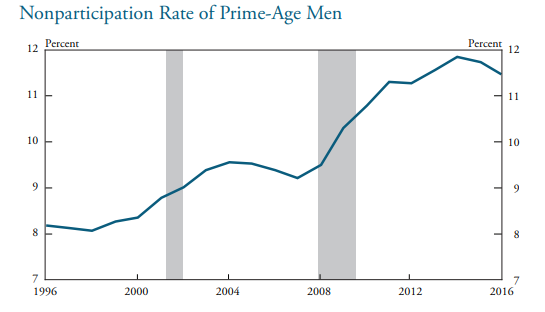Kansas City Fed takes a closer look
This is one of the most-devastating charts about the US economy. It shows the share of 25-54-year-old me who aren't working or looking for a job.

In 20 years, it's risen to 11.4% from 8.2%. That difference is extremely troubling.
The Kansas City Fed is out with a study on why so many people who should be working have chosen not to.
The easy answers: drugs, dependence on government programs, education and demographics are convincingly refuted.
Instead, the author paints a more-complicated picture of how the disappearance of middle-income jobs has disenfranchised workers.
"My simple counterfactual exercise and research by other economists provide evidence that a change in labor demand-specifically, the decline in the employment share of middle-skill jobs-helps explain a significant part of the recent increase in labor force nonparticipation among prime-age men," author Didem Tüzemen writes.
Equally importantly, he argues that they're unlikely to come back to the labor force. That means that even if wages go up, more workers won't come online.



